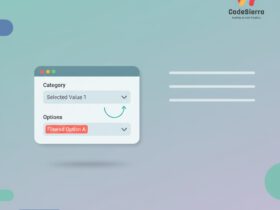Overview
Muting permission sets are a powerful feature within Salesforce Permission Set Groups that let administrators remove (or “mute”) specific permissions granted by grouped permission sets. They help implement least-privilege access, create scoped exceptions, and simplify permission management for large user populations.
What is a Muting Permission Set?
A muting permission set is a special permission set used only inside a Permission Set Group. Instead of granting permissions, it subtracts or disables specific permissions that would otherwise be granted by permission sets included in the group. Importantly, muting permission sets cannot be assigned directly to users—they only take effect when the permission set is part of a Permission Set Group as a muting entry.
Key Use Cases
Muting permission sets are useful in scenarios such as:
- Implementing least privilege: Start from a broad set of permissions and mute high-risk permissions (e.g., Delete, Modify All) for certain user cohorts.
- Creating environment-specific profiles: Use one Permission Set Group for multiple environments (dev, qa, prod) and mute permissions that should not be available in a given environment.
- Handling temporary exceptions: Mute a few sensitive permissions while an audit or incident is in progress, then remove the mute once resolved.
- Simplifying management: Combine many permission sets into a group and centrally mute overlapping or undesirable permissions rather than editing every source permission set.
How Muting Works (Behavior & Precedence)
Understanding the behavior is critical:
- Muting removes permissions that would otherwise be granted by permission sets inside the same Permission Set Group.
- If a permission is granted directly by a user’s profile or a permission set assigned outside the group, muting inside the group does NOT revoke that permission.
- Muting is not an explicit “deny”—it only subtracts permissions granted by the group. It cannot create new restrictions that didn’t originate from the group’s permission sets.
- Muting permission sets can target object, field, Apex, Visualforce, tab, and system permissions—as long as those permissions are controllable via permission sets.
Creating a Muting Permission Set
There are two common approaches: using the Salesforce UI, and using metadata (for automation).
Using the Salesforce UI
1. Create a standard Permission Set and give it a clear name like Mute-Sensitive-Actions.
2. In that permission set, explicitly turn OFF or leave unchecked the particular object/field/system permissions you want muted (e.g., Delete, Modify All, specific Apex access) — the muting behavior is defined by the permissions included.
3. Create or edit a Permission Set Group and add your base permission sets.
4. In the Permission Set Group, add the muting permission set under the Muting Permission Sets section.
Using Metadata (example snippet)
When deploying via the Metadata API or SFDX, a PermissionSetGroup XML includes <mutingPermissionSets> entries. Example:
<PermissionSetGroup xmlns="http://soap.sforce.com/2006/04/metadata">
<label>Salesforce PSG - Limited</label>
<permissionSets>
<fullName>Base_Salesforce_User</fullName>
</permissionSets>
<mutingPermissionSets>
<fullName>Mute_Sensitive_Actions</fullName>
</mutingPermissionSets>
</PermissionSetGroup>
Best Practices
- Name muting permission sets clearly (prefix with
Mute_) so other admins understand intent. - Keep muting permission sets small and focused — target only the permissions you must restrict.
- Document which permission sets in a group provide the permissions you are muting to avoid surprises.
- Test in a sandbox thoroughly: confirm that permissions are removed only for users assigned the Permission Set Group and not for users who have the same permissions via other means (profile or direct permission sets).
- Avoid overusing muting as a substitute for clean permission set design; use it strategically where it simplifies administration.
Common Pitfalls
- Expecting muting to be a global deny — muting only affects permissions granted inside the group.
- Adding a muting permission set but forgetting to include the permission it should mute in its assignment — verify the target permissions are present in the group’s permission sets.
- Relying on muting to fix permissions granted from profiles — profiles are outside the scope of muting inside Permission Set Groups.
Summary
Muting permission sets give Salesforce admins a precise, low-risk way to subtract permissions from a Permission Set Group without changing the original permission sets. They make it easier to implement least privilege, handle exceptions, and manage complex permission landscapes — when used carefully and with proper testing.










Leave a Reply